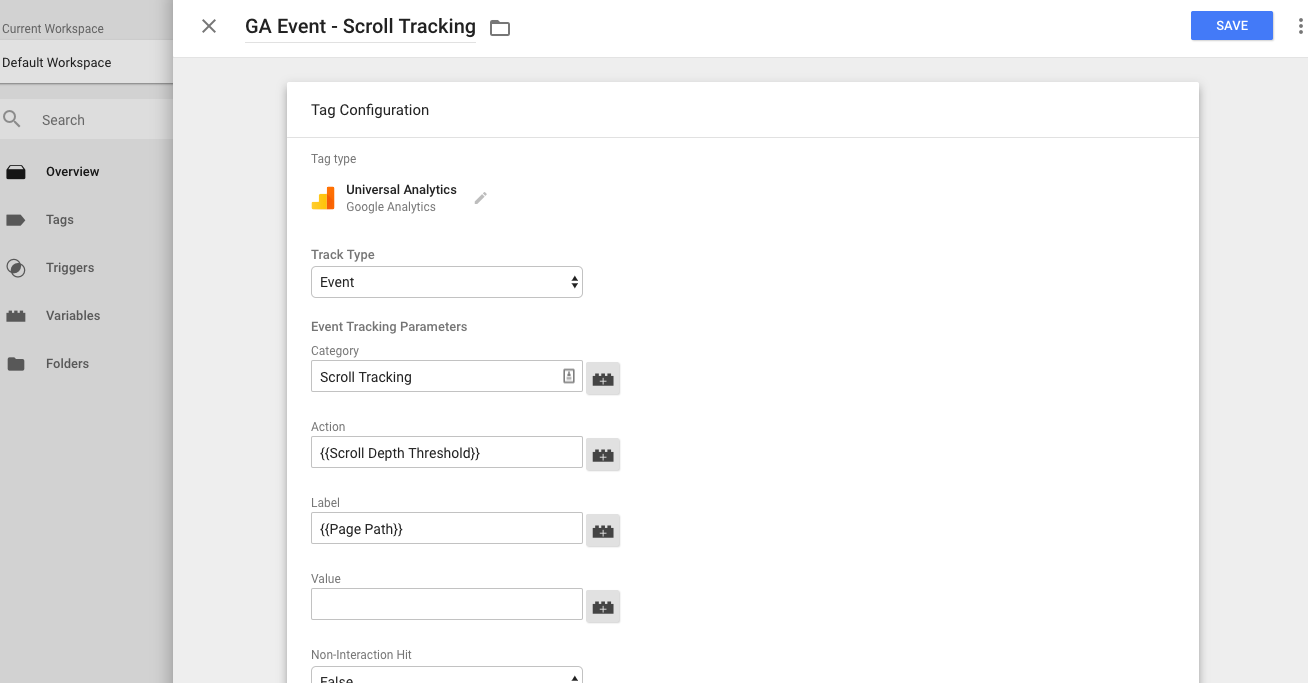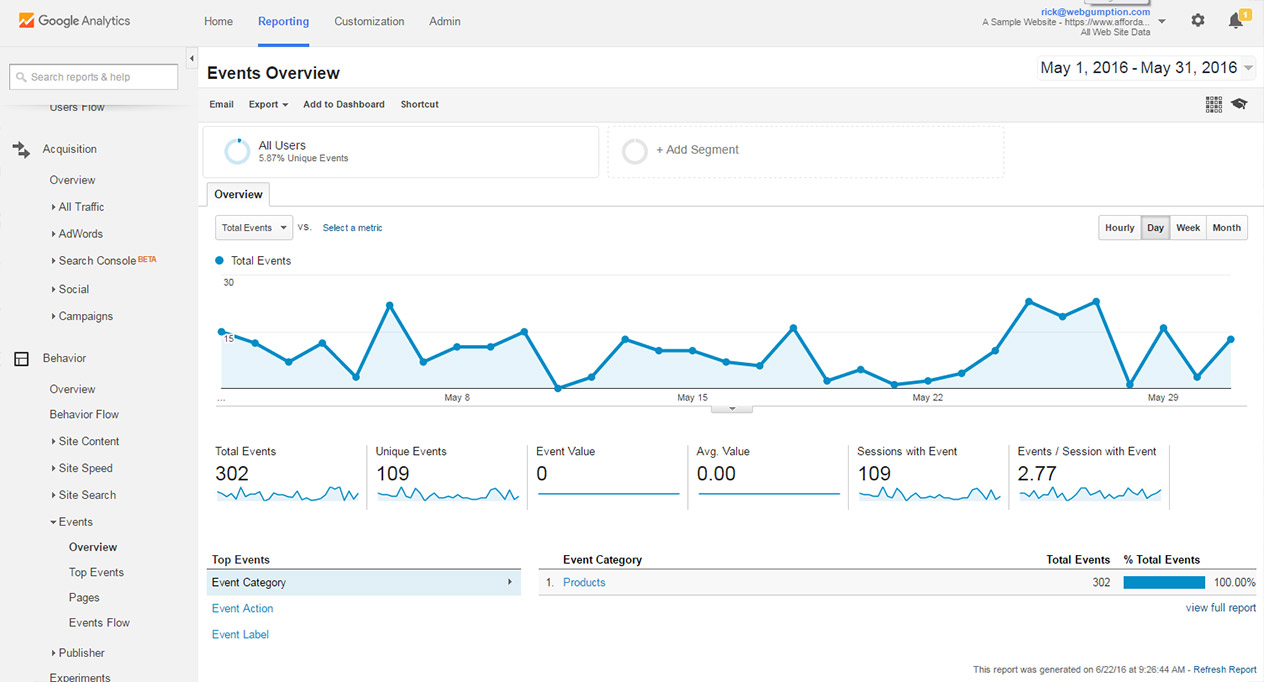9 Easy Facts About Google Analytics Event Tracking Shown
Wiki Article
The 10-Second Trick For Google Analytics Event Tracking
Table of Contents8 Simple Techniques For Google Analytics Event TrackingThe 9-Minute Rule for Google Analytics Event TrackingThe Facts About Google Analytics Event Tracking RevealedHow Google Analytics Event Tracking can Save You Time, Stress, and Money.3 Simple Techniques For Google Analytics Event TrackingThe Single Strategy To Use For Google Analytics Event Tracking
If you're going to set up event tracking by hand, after that you're mosting likely to need to add some extra code to the elements you intend to gather information from. The code you're mosting likely to function with will certainly look something similar to this: There are four components within that code fragment that you're mosting likely to need to specify yourself: event, Group, occasion, Action, event, Tag and event, Value.
As you can see, 2 of these are needed (classification and action) while tag and value are optional. All of it relies on the sort of details you want relayed back to Google Analytics when a customer clicks the specified element (Google Analytics Event Tracking). It will be a lot easier to specify these components if you evaluate your website and determine which elements/actions you wish to track
Excitement About Google Analytics Event Tracking
Now, you'll be asked to define the and and you'll intend to pick from the drop-down food selection that appears when you click on. This will bring up the same event tracking parts we looked at earlier, which you'll need to fill in. When you have actually specified these, you can relocate to the 2nd box and select the trigger that will fire your tag.On the next display, you'll additionally have an area for naming your trigger and, if you click on the box, you'll see a checklist of the various triggers you can select. In this instance, we desire to choose and then pick the alternative below. Then you'll set the trigger to just terminate when a component is clicked with an URL that includes the.
Every site talks. Before information analytics, we couldn't hear the voices of our internet sites. Yet exactly how do you know what your internet site is stating? Simple - Occasion tracking! Occasion tracking offers you an image of how individuals engage with your internet site and company (Google Analytics Event Tracking). Do you wish to know even more? Then, continue reading as we check out every little thing you need to recognize, including what it is, why you should track occasions, just how to handle occasions data, and various other pertinent FAQs you might have.
Little Known Facts About Google Analytics Event Tracking.
You can switch between your occasion groups, activities, and tags in the Leading Events report. The Event Pages report shows the pages where occasions are set off.Events in Google Analytics have four main elements. Google Analytics uses these codes to track user communications and group them right into occasion reports (Google Analytics Event Tracking).
A list of the parameters you can track on your web site is on click here for more info the. After examining all needed areas, you can click "X" to shut the home window and return to the Learn More Here Overview food selection on the.
Things about Google Analytics Event Tracking

Choosing "False" will certainly protect against that session from being a bounce. If you haven't done so, you might need to establish a variable in the Google Analytics Settings box. Click "New Variable ..." if you can't find one to select. After this, enter your GA tracking ID in the Tracking ID field.
Your ID will be on top of the screen. To do this, follow the next series of actions: After configuring the areas, pick the "Triggering" area. When configuring your brand-new trigger, click the "+" switch, after that the "pencil" switch, after that select your trigger type. Label your trigger and specify the conditions that result in set off firing.
Google Analytics Event Tracking Can Be Fun For Everyone

When it comes to recognizing which sections and components are assisting customers with your conversion channel, you still won't recognize. So, without event monitoring, GA reports will just count check outs as single-page sessions, also if read the article individuals invest a great deal of time on one web page and involve with it considerably (and a bounce).
How does event tracking accomplish this?Single-page sessions understood as bounces start and end on the very same web page. Without event monitoring, GA will classify a user's visit as a bounce if they do not browse to an additional web page, no matter of just how they connect with it. As an example, a video-rich web page can have a greater bounce price if occasions are not tracked.
Google Analytics Event Tracking Can Be Fun For Everyone
Nonetheless, for GA to take event hits right into account when measuring bounce rates, you must choose "Non-interaction event" as "False" throughout the GTM setup. Setting "occasion objectives" with event activity is a superb means to monitor user tasks you value very, such as new lead entries or click a contact us to activity.Report this wiki page